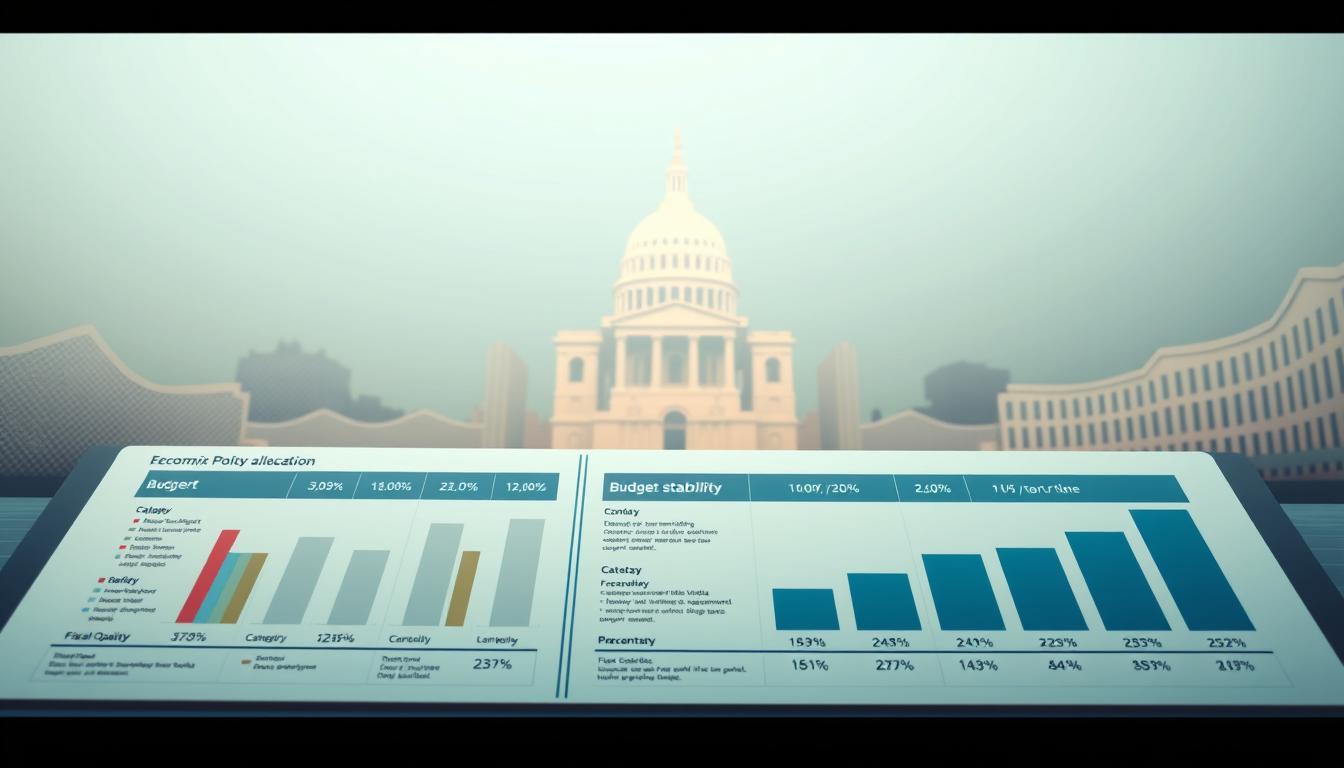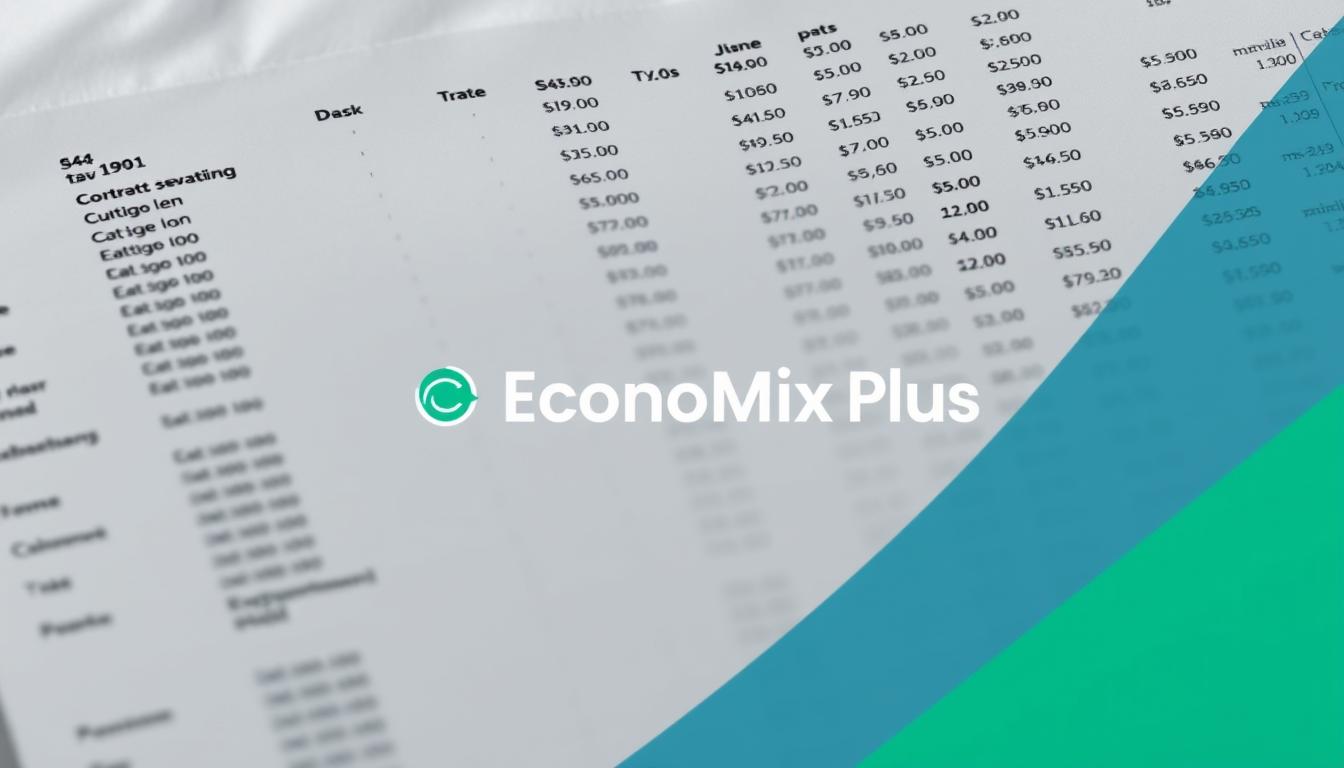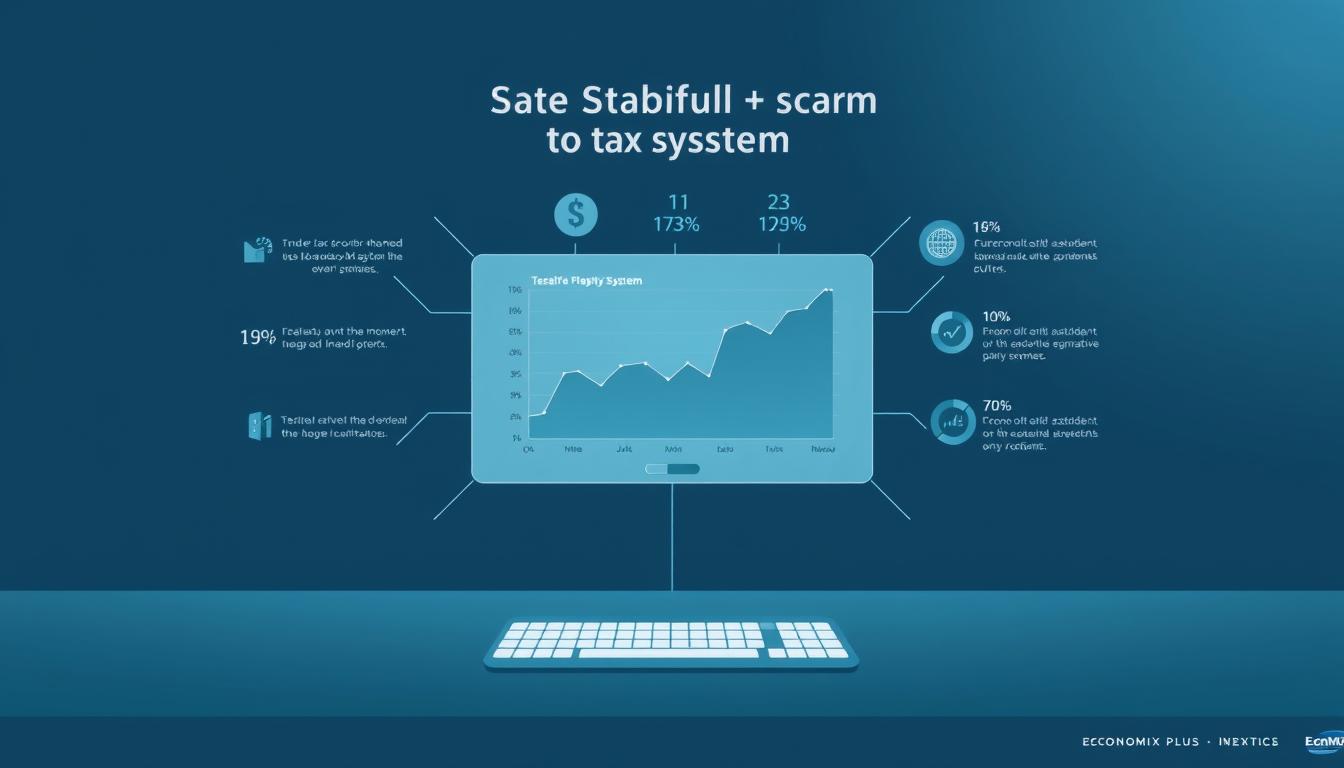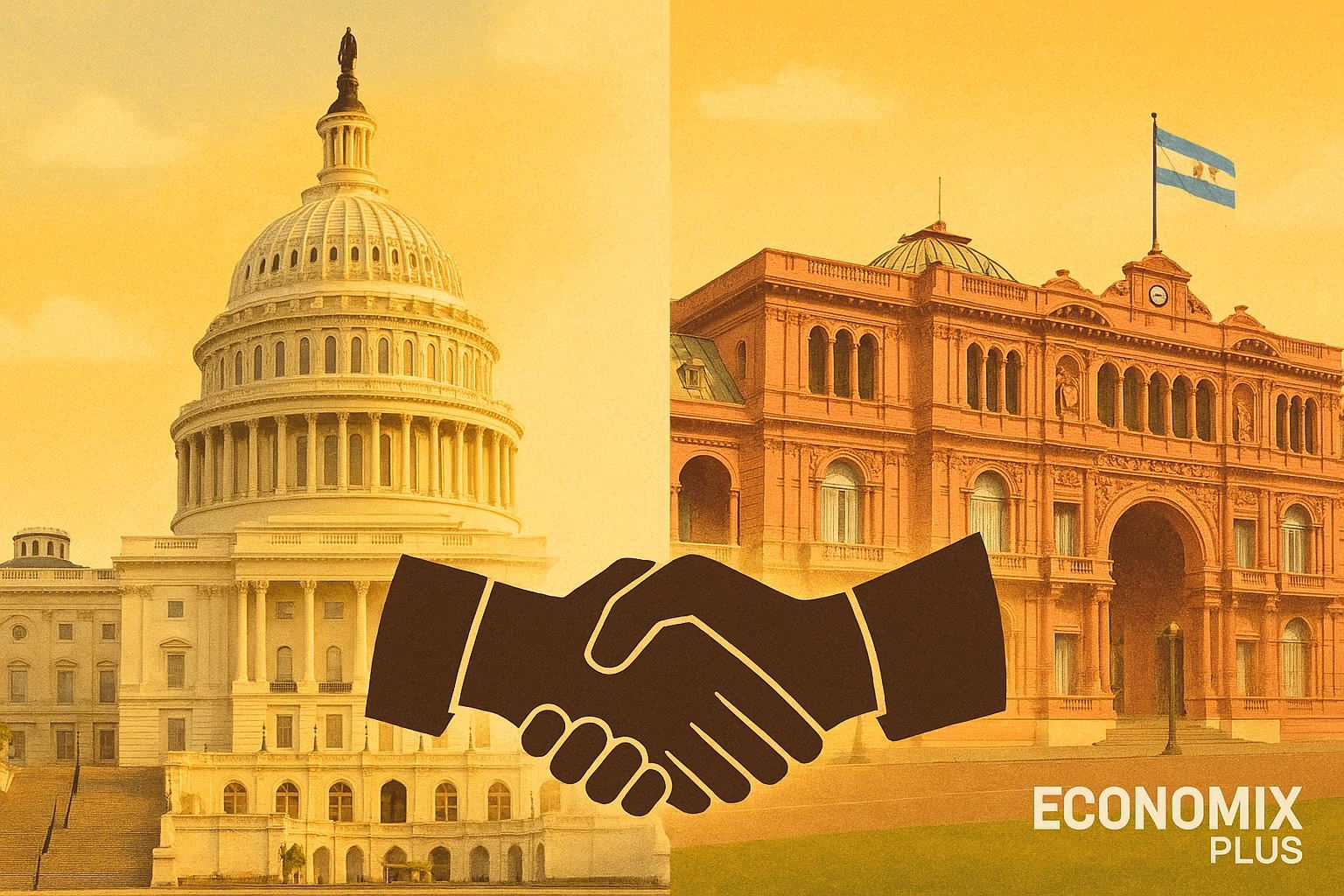Imagine a world where roads crumble, schools vanish, and national defense evaporates overnight. Without stable funding, even the strongest governments falter. Revenue collection frameworks act as the backbone of public services—but how do they maintain equilibrium amid shifting priorities and economic turbulence?
In the United States, fiscal stability hinges on a carefully balanced approach to income generation. For instance, federal receipts accounted for roughly 25% of GDP in 2020, demonstrating taxation’s critical role in funding essential programs. Major reforms like the Tax Reform Act of 1986 and the 2017 Tax Cuts and Jobs Act reshaped revenue streams while aiming to stimulate growth.
Policymakers design rates and brackets to align with broader economic goals. Progressive structures target higher earners, while corporate levies influence business expansion decisions. These mechanisms adapt to changing needs—whether reducing debt burdens or financing infrastructure projects.
Key Takeaways
- Federal revenue systems generate approximately one-quarter of national economic output annually
- Historic policy changes demonstrate taxation’s evolving relationship with fiscal health
- Rate adjustments directly impact household spending and corporate investment patterns
- Progressive structures aim to balance equity with revenue generation needs
- Effective frameworks prevent budget shortfalls during economic downturns
Introduction to Government Budget Stability and Taxation
A nation’s ability to fund public services hinges on consistent revenue streams and disciplined fiscal management. In the United States, nearly two-thirds of federal spending flows to mandatory programs like Social Security, while discretionary allocations cover defense and infrastructure. This balance determines long-term budget health—overspending risks debt accumulation, while underfunding cripples essential services.

Fiscal policy shapes how governments collect and distribute resources. Progressive income tax structures and corporate tax rates directly influence household savings and business expansions. When designed effectively, these policies prevent deficits without stifling economic growth.
Mandatory commitments differ sharply from discretionary choices. Programs like Medicare operate on autopilot, consuming 63% of the 2023 federal budget. Meanwhile, annual debates decide funding for education or environmental initiatives. Together, they reveal how taxes stabilize government operations across shifting priorities.
Smart tax rates encourage productive behaviors. Higher earners contribute more under progressive systems, while businesses weigh spending against potential returns. These dynamics underscore why balanced fiscal policy remains critical for national economy resilience.
A Primer on Fiscal Policy and Tax Systems in the United States
Fiscal policy operates as the steering wheel guiding economic priorities through revenue and spending adjustments. In the United States, this framework combines progressive income tax brackets with corporate levies to fund public services while encouraging growth. The structure has evolved through landmark reforms like the 1986 Tax Reform Act (TRA86) and 2017 Tax Cuts and Jobs Act (TCJA).

TRA86 simplified the code by reducing individual tax rates from 15 brackets to four, slashing the top rate from 50% to 28%. It nearly doubled the standard deduction—a move replicated in TCJA, which raised it from $6,500 to $12,000 for singles. Corporate rates fell from 46% to 34% under TRA86, then to 21% with TCJA.
| Reform | Individual Rates | Corporate Rates | Key Change |
|---|---|---|---|
| TRA86 | 15→4 brackets | 46%→34% | Eliminated tax shelters |
| TCJA | 7→7 brackets | 35%→21% | Doubled child credit |
These shifts directly impacted behavior. After TRA86, taxation revenues grew 10% within three years despite lower rates. TCJA’s temporary provisions, however, created uneven effects—business investment spiked briefly before declining.
Modern fiscal policy balances equity concerns with revenue needs. Top earners now fund 40% of federal income taxes, up from 35% pre-TCJA. Yet debates persist about optimal rates for sustaining growth without widening deficits.
How does the tax system support government budget stability
Effective taxation mechanisms act as shock absorbers during economic shifts. When the 2017 TCJA cut corporate rates to 21%, revenues initially dropped by $1.5 trillion. Yet by 2022, individual taxes climbed 10% as wage growth offset lower brackets—a pattern mirroring TRA86’s post-reform revenue rebound.

Balanced spending relies on adaptable revenue streams. Federal receipts averaged 16.5% of GDP from 2018–2023, down from 17.2% pre-TCJA. This gap widened debt to 120% of GDP as mandatory programs consumed 65% of outlays. Responsive policy adjusts rates without destabilizing essential services.
Credits like the Earned Income Tax Credit (EITC) illustrate targeted relief. In 2022, EITC lifted 5.6 million households above poverty levels while maintaining consumer spending—critical for economic stability. Such benefits prevent revenue erosion during downturns by sustaining demand.
Progressive structures amplify equity. Post-TCJA data shows the top 1% now fund 40% of federal income taxes, up from 35% in 2016. However, corporate rate cuts spurred stock buybacks over wage hikes, revealing trade-offs between revenue goals and income distribution.
Congressional Budget Office projections highlight the stakes: unchecked debt growth could slash GDP by 4% by 2050. Strategic tax rates and deductions remain vital tools for harmonizing fiscal health with public needs.
Tax Impacts on Individuals and Households
Federal levies reshape household finances while balancing equity and revenue needs. Progressive structures and targeted credits directly influence spending power, workforce participation, and long-term savings strategies.
Income Distribution and Progressive Taxation
The U.S. income tax system remains highly progressive. Data shows the top 1% paid 42.3% of federal income taxes in 2022 despite earning 22.2% of total income. Credits like the EITC reduce effective rates for lower earners—lifting 5.6 million above poverty levels annually.
| Income Group | Share of Taxes Paid | Average Rate |
|---|---|---|
| Top 1% | 42.3% | 25.6% |
| Middle 20% | 10.2% | 14.1% |
| Bottom 50% | 2.3% | 3.5% |
Expanded EITC benefits correlate with increased workforce participation. A 2021 study found a 7% rise in employment among eligible single mothers after credit expansions.
Work Incentives and Retirement Savings
Tax rules steer retirement planning decisions. Pre-tax 401(k) contributions lower current taxable income, while Roth options tax savings upfront. In 2023, 55% of workers prioritized pre-tax accounts—a 12% increase since 2017 rate adjustments.
Policies also affect side income reporting. Gig economy participation rose 18% after standard deduction increases simplified filing for part-time earners.
Tax Effects on Business Behavior and Investment
Businesses constantly recalibrate strategies based on fiscal landscapes. Legal structures and financing choices often pivot around tax implications, creating ripple effects across economic growth.
Corporate Structures and Legal Forms
The 1986 Tax Reform Act triggered a seismic shift. C-corporations faced a 46% rate versus 28% for individuals, pushing entrepreneurs toward pass-through entities. IRS data shows S-corp filings jumped 127% between 1986-1990.
| Entity Type | Pre-TRA86 Rate | Post-TRA86 Rate |
|---|---|---|
| C-corporation | 46% | 34% |
| Pass-through | 50% (top bracket) | 28% |
This disparity widened under TCJA. Pass-through income now enjoys 20% deductions, while C-corps pay 21%. Over 60% of new firms chose pass-through status in 2023.
Influences on Borrowing and Investment Decisions
TCJA’s 30% cap on interest deductions reshaped capital strategies. Manufacturers reduced debt reliance by 18% post-reform according to Federal Reserve data. Simultaneously, full expensing rules boosted equipment purchases by 23% in 2018.
Bonus depreciation provisions illustrate policy power. Allowing immediate write-offs for capital investments spurred $1.2 trillion in business spending during TCJA’s first three years. However, 42% of companies accelerated existing plans rather than creating new projects.
These dynamics reveal a clear pattern: tax rules act as invisible hands steering corporate checkbooks. Lawmakers balance revenue needs against economic growth through precise rate adjustments and deduction designs.
Federal Budget Allocation: Mandatory versus Discretionary Spending
Federal dollars flow through three main channels: mandatory programs, discretionary choices, and debt servicing. In 2023, these categories consumed 63%, 29%, and 8% of total outlays respectively. Taxation fuels this framework—individual and corporate payments cover 90% of annual obligations.
Analyzing Mandatory Spending Categories
Mandatory programs operate on autopilot, requiring no annual congressional approval. Social Security leads at 21% of total spending, followed by Medicare (13%) and Medicaid (10%). Combined, these three account for 44% of all federal expenditures.
| Program | 2023 Spending | Beneficiaries |
|---|---|---|
| Social Security | $1.2 trillion | 67 million |
| Medicare | $829 billion | 65 million |
| Medicaid | $592 billion | 84 million |
Understanding Discretionary Spending Trends
Discretionary allocations have shrunk from 67% of the budget in 1962 to under 30% today. Defense now claims 47% of this category, while education and infrastructure split 22% combined. Annual appropriations debates determine these fluid priorities.
| Decade | Discretionary Share | Top Priority |
|---|---|---|
| 1960s | 67% | Defense |
| 2020s | 29% | Healthcare |
Net interest costs are projected to double by 2033, consuming 14% of revenue. This growth stems from rising debt levels and interest rate hikes—factors directly influenced by fiscal policy decisions. Tax code adjustments remain Congress’ primary tool for balancing these competing demands.
Understanding Net Interest and the Growth of Public Debt
Interest payments on national obligations now rival major budget categories like defense. Net interest—the cost of servicing debt minus interest income—consumed 14% of federal revenue in 2023. By 2033, this figure could reach 21%, according to the Congressional Budget Office.
Rising rates directly increase borrowing costs. Each 1% hike in average yields adds $2.8 trillion to decade-long debt projections. In 2024, daily interest payments exceeded $2 billion—enough to fund unemployment insurance for six months.
Economic growth rates critically influence sustainability. When GDP expansion outpaces interest rates, debt burdens shrink relative to national output. Conversely, 3% growth with 5% borrowing costs creates compounding pressure—a scenario projected for 2025-2034.
| Year | Net Interest (% of Budget) | Debt/GDP Ratio |
|---|---|---|
| 2023 | 14% | 120% |
| 2034 | 21% | 136% |
| 2054 | 23% | 166% |
Tax policy serves as a key lever for adjustment. Raising revenue by 1% of GDP could reduce 2054 debt projections by 40 percentage points. Strategic reforms to tax rates and base broadening offer pathways to stabilize capital markets without austerity measures.
The CBO warns unchecked debt could lower future incomes by 12%. Balancing spending commitments with income generation remains imperative—a challenge requiring both fiscal discipline and adaptive taxation frameworks.
The Role of Tax Expenditures in Shaping Revenue Streams
Tax expenditures—deductions, credits, and exclusions—redirect $1.9 trillion annually through the U.S. fiscal framework. These provisions function as indirect government spending, rewarding specific behaviors while reducing federal income.
The Congressional Budget Office identifies three major items dominating 2024’s total:
- Exclusions for employer health plans ($400 billion)
- Capital gains tax breaks ($295 billion)
- Mortgage interest deductions ($85 billion)
These carve-outs disproportionately benefit higher earners. Households making over $200,000 claim 45% of capital gains savings.
| Provision | Annual Cost | Primary Beneficiaries |
|---|---|---|
| Retirement Account Breaks | $320 billion | Top 20% earners |
| Earned Income Tax Credit | $70 billion | Low-income workers |
| State Tax Deductions | $100 billion | High-tax state residents |
Such policies reshape economic decisions. Mortgage deductions inflate housing demand, while retirement incentives boost stock market participation. However, they create horizontal inequity—similar incomes face different liabilities based on spending patterns.
Lawmakers balance growth incentives against revenue losses. Corporate tax breaks spur innovation but reduce funds for infrastructure. The EITC lifts 5 million from poverty annually yet requires strict eligibility checks. This tension between efficiency and fairness defines modern fiscal policy debates.
Future Projections and Tax Reforms for Fiscal Stability
Projected U.S. debt levels demand urgent fiscal recalibration. The Congressional Budget Office warns debt could reach 166% of GDP by 2054 without intervention—nearly double today’s 120% ratio. Closing this gap requires balancing revenue enhancements with disciplined spending controls.
Historical data reveals actionable patterns. Pre-Reagan corporate rates of 46% generated 1.7% of GDP in revenue—nearly matching today’s 1.6% at 21% rates. Restoring select deductions while maintaining lower brackets could boost income without stifling growth.
| Reform Option | Revenue Impact | Growth Effect |
|---|---|---|
| Corporate rate to 25% | +0.4% GDP | -0.1% annually |
| Capital gains parity | +$130B/year | Neutral |
| EITC expansion | -$80B/year | +0.3% employment |
Targeted base broadening offers another path. Eliminating $1.9 trillion in annual tax expenditures—like retirement account breaks favoring top earners—could fund 18% of current debt service costs. Pairing this with a 2% wealth tax on billionaires might generate $360 billion yearly.
“Modest rate adjustments beat austerity measures,” notes a Brookings Institution analysis. Raising revenue by 1% of GDP could slash 2054 debt projections by 40 percentage points. This approach mirrors 1993’s deficit reduction success, which combined higher income tax brackets with spending caps.
Policymakers face clear trade-offs. Maintaining 21% corporate rates risks widening deficits, while exceeding 28% could deter foreign capital. Strategic reforms must prioritize stability without destabilizing the economy—a delicate balance requiring evidence-driven policy.
International Comparisons and Lessons from Peer Countries
Global fiscal strategies reveal striking contrasts in balancing public needs with economic vitality. The United States collects 26.6% of GDP through taxation—below the OECD average of 34%. Meanwhile, France and Denmark exceed 45%, funding robust social services through higher rates and broader bases.
Revenue Structures and Policy Outcomes
Nordic countries demonstrate how high tax rates coexist with competitive economies. Sweden’s 57% top income tax rate funds universal healthcare and education, while its 25% corporate income levy remains below 2000s U.S. levels. VAT systems—averaging 25% in Europe versus 0% federal U.S. sales tax—generate stable revenue streams less prone to economic swings.
| Country | Tax/GDP | Corporate Rate | Debt/GDP |
|---|---|---|---|
| United States | 26.6% | 21% | 120% |
| Germany | 39.3% | 29.9% | 66% |
| Norway | 42.2% | 22% | 44% |
Lower U.S. taxes correlate with higher debt levels. The Congressional Budget Office projects U.S. debt will reach 166% of GDP by 2054—triple Germany’s current 66%. European nations offset aging populations through spending controls and consumption-based taxation.
Competitive Pressures and Reform Insights
Since 2017’s corporate tax cuts, 78% of OECD nations reduced rates—averaging 21.3% versus 25.4% in 2000. However, countries like Ireland combine 12.5% rates with 23% VAT to maintain budget surpluses. “Progressive consumption taxes enable leaner deficits without stifling growth,” notes a 2023 IMF report on Nordic models.
- Sweden’s 31% VAT funds 50% of total revenue
- U.S. payroll taxes cover 35% of federal income
- Denmark spends 24.8% of GDP on welfare versus 18.7% in America
These data points suggest strategic trade-offs. Higher European taxes finance lower inequality and debt, while U.S. policies prioritize growth through competitive rates. Bridging this gap requires evidence-based adjustments to spending priorities and revenue collection methods.
Conclusion
A nation’s fiscal foundation rests on balanced tax policy that adapts to economic realities. Historical reforms like TRA86 and TCJA demonstrate how rate adjustments influence revenue streams while addressing debt challenges. Progressive structures ensure top earners contribute proportionally, with the top 1% now funding 42% of federal income taxes.
Business decisions pivot around corporate tax incentives, as seen in post-TCJA capital expenditure surges. International comparisons reveal trade-offs—Nordic models combine high rates with robust services, while the U.S. prioritizes competitive brackets. Both approaches underscore the link between efficient taxation and budget resilience.
Projections demand strategic reforms. Closing $1.9 trillion in annual tax expenditures could stabilize spending without austerity. As debt approaches 166% of GDP by 2054, evidence-driven policy remains critical for sustaining public services and economic growth.
The path forward requires calibrating rates to generate sufficient revenue while fostering innovation. Lessons from past successes and global peers provide a roadmap for maintaining fiscal equilibrium in an evolving economy.
FAQ
What role do federal income taxes play in maintaining fiscal stability?
How do corporate tax rates influence federal budget projections?
Why are mandatory spending programs challenging to reform?
What risks do rising interest rates pose to public debt management?
How do Nordic tax models differ from U.S. approaches to revenue generation?
Can tax expenditures meaningfully reduce annual deficits?
FAQ
What role do federal income taxes play in maintaining fiscal stability?
Federal income taxes provide approximately 50% of U.S. government revenue, funding critical programs and debt obligations. Progressive tax rates ensure higher earners contribute proportionally more, balancing revenue streams during economic shifts.
How do corporate tax rates influence federal budget projections?
Corporate income taxes account for roughly 7% of federal revenue. Rate adjustments, like the 2017 Tax Cuts and Jobs Act, impact investment decisions and long-term revenue, affecting Congressional Budget Office debt-to-GDP forecasts.
Why are mandatory spending programs challenging to reform?
Mandatory spending, including Social Security and Medicare, comprises over 60% of the federal budget. These programs operate on autopilot, requiring legislative changes to alter benefits or eligibility criteria tied to demographic trends.
What risks do rising interest rates pose to public debt management?
Higher interest rates increase borrowing costs on trillion in federal debt. Each 1% rate hike adds approximately 0 billion annually to net interest expenses, crowding out discretionary spending on infrastructure or education.
How do Nordic tax models differ from U.S. approaches to revenue generation?
Countries like Sweden combine high VAT rates (25%) with broad-based income taxes, funding robust social safety nets. Their systems prioritize consumption taxes over corporate rates, achieving 44% tax-to-GDP ratios compared to the U.S. 27% average.
Can tax expenditures meaningfully reduce annual deficits?
Tax breaks for mortgages, retirement savings, and healthcare cost
FAQ
What role do federal income taxes play in maintaining fiscal stability?
Federal income taxes provide approximately 50% of U.S. government revenue, funding critical programs and debt obligations. Progressive tax rates ensure higher earners contribute proportionally more, balancing revenue streams during economic shifts.
How do corporate tax rates influence federal budget projections?
Corporate income taxes account for roughly 7% of federal revenue. Rate adjustments, like the 2017 Tax Cuts and Jobs Act, impact investment decisions and long-term revenue, affecting Congressional Budget Office debt-to-GDP forecasts.
Why are mandatory spending programs challenging to reform?
Mandatory spending, including Social Security and Medicare, comprises over 60% of the federal budget. These programs operate on autopilot, requiring legislative changes to alter benefits or eligibility criteria tied to demographic trends.
What risks do rising interest rates pose to public debt management?
Higher interest rates increase borrowing costs on $34 trillion in federal debt. Each 1% rate hike adds approximately $300 billion annually to net interest expenses, crowding out discretionary spending on infrastructure or education.
How do Nordic tax models differ from U.S. approaches to revenue generation?
Countries like Sweden combine high VAT rates (25%) with broad-based income taxes, funding robust social safety nets. Their systems prioritize consumption taxes over corporate rates, achieving 44% tax-to-GDP ratios compared to the U.S. 27% average.
Can tax expenditures meaningfully reduce annual deficits?
Tax breaks for mortgages, retirement savings, and healthcare cost $1.8 trillion annually—exceeding discretionary spending. Reforming deductions for capital gains or carried interest could recover $400 billion over a decade without rate hikes.
What triggers automatic stabilizers during economic downturns?
Programs like unemployment insurance and Medicaid expand during recessions, injecting funds without new legislation. These stabilizers accounted for 14% of 2020 GDP, cushioning household incomes and maintaining consumption levels.
How does capital gains taxation affect long-term investment behavior?
Preferential rates (20% top rate vs 37% ordinary income) incentivize asset holding periods over short-term trading. However, critics argue this exacerbates wealth inequality, as top 1% households receive 75% of capital gains benefits.
.8 trillion annually—exceeding discretionary spending. Reforming deductions for capital gains or carried interest could recover 0 billion over a decade without rate hikes.
What triggers automatic stabilizers during economic downturns?
Programs like unemployment insurance and Medicaid expand during recessions, injecting funds without new legislation. These stabilizers accounted for 14% of 2020 GDP, cushioning household incomes and maintaining consumption levels.
How does capital gains taxation affect long-term investment behavior?
Preferential rates (20% top rate vs 37% ordinary income) incentivize asset holding periods over short-term trading. However, critics argue this exacerbates wealth inequality, as top 1% households receive 75% of capital gains benefits.














